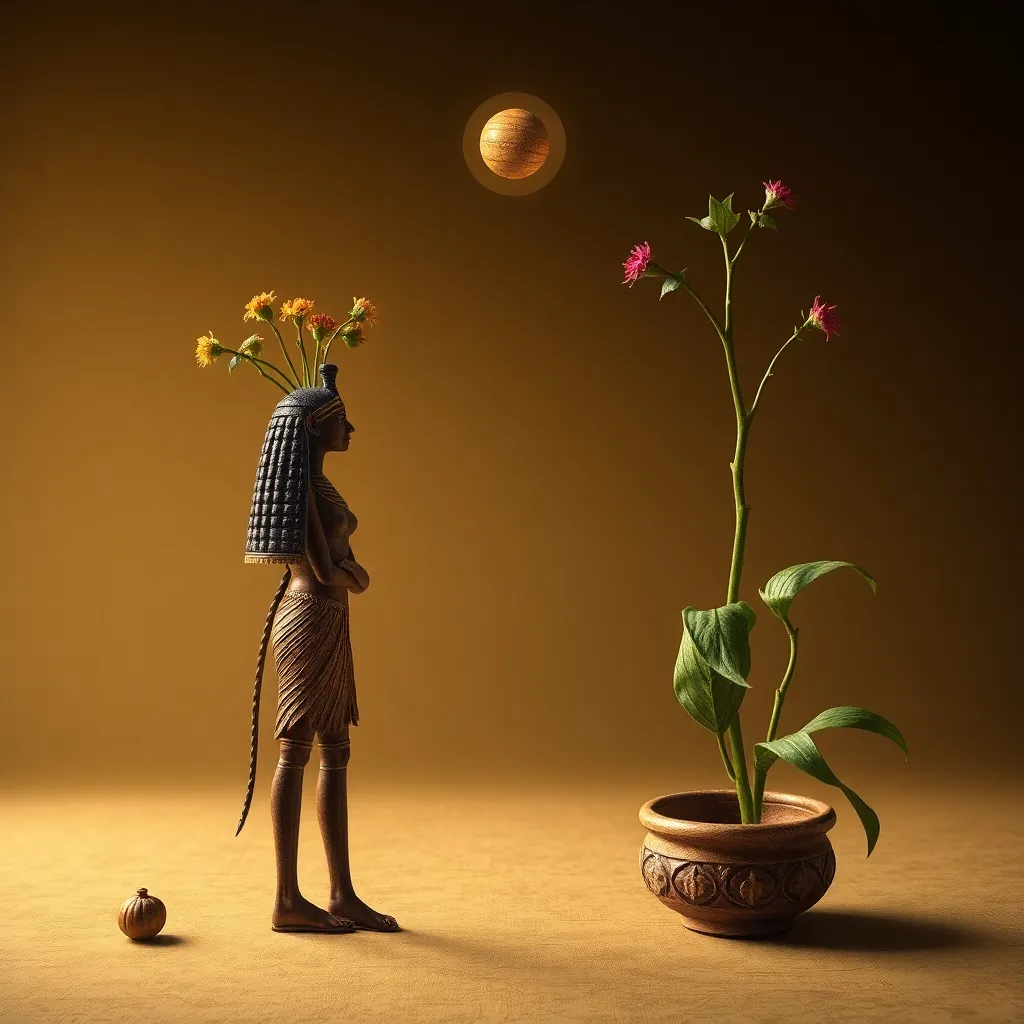The Role of Sacred Plants in Egyptian Divination
I. Introduction
Divination in ancient Egyptian culture refers to the practices and rituals employed to gain insight into the future or uncover hidden knowledge. This practice played a crucial role in guiding decisions and understanding the will of the gods. Sacred plants were integral to these spiritual practices, believed to possess divine attributes that could facilitate communication between the earthly and the divine. This article explores the profound connection between sacred plants and divination in ancient Egypt, uncovering their significance and applications in this mystical tradition.
II. Historical Context of Divination in Ancient Egypt
Ancient Egyptian beliefs were deeply intertwined with the natural world, and their practices reflected a rich tapestry of spirituality. The Egyptians viewed the cosmos as a living entity, where every element held significance. Omens and signs from nature were crucial for decision-making, guiding everything from agricultural practices to matters of state.
Priests and priestesses held the esteemed role of diviners, responsible for interpreting signs and communicating with the gods. They conducted rituals that often involved sacred plants, which were believed to enhance their abilities to perceive divine messages.
III. Key Sacred Plants Used in Egyptian Divination
A. Lotus (Nymphaea caerulea)
The lotus flower, particularly the blue lotus, is one of the most iconic symbols in ancient Egypt. It represents creation, rebirth, and spiritual enlightenment. Its ability to emerge from murky waters at dawn and bloom into a beautiful flower made it a powerful symbol of resurrection.
- Symbolism and spiritual significance: The lotus was associated with several deities, including Nefertum, the god of fragrance and beauty, and Osiris, the god of the afterlife.
- Usage in divination rituals: The lotus was often used in rituals to enhance meditation and clarity of thought, allowing priests to connect more deeply with the divine.
B. Papyrus (Cyperus papyrus)
Papyrus, a plant native to the Nile, was not only vital for making writing materials but also held significant spiritual value. Its tall stalks and distinctive flowering heads made it a symbol of life and growth.
- Historical context and applications: Papyrus was used in various religious texts and was integral to many rituals, including divination practices.
- Insights gained from its use in divination: The characteristics of papyrus, such as its ability to thrive in water, were interpreted as signs of prosperity and fertility.
C. Frankincense (Boswellia sacra)
Frankincense is another sacred plant that played a vital role in Egyptian rituals and offerings. Its aromatic resin was highly valued and used in incense.
- Role in rituals and offerings: Frankincense was burned during ceremonies to purify spaces and create a sacred atmosphere conducive to divine communication.
- Connection to divine communication: The smoke from frankincense was believed to carry prayers to the gods, facilitating a connection between the earthly realm and the divine.
IV. Methods of Divination Involving Sacred Plants
Divination practices in ancient Egypt employed various methods involving sacred plants, each designed to reveal hidden truths or offer guidance.
- Herbal concoctions and potions: Priests would create mixtures from sacred plants believed to enhance visions and insights.
- Smoke and incense rituals: Burning sacred plants like frankincense and myrrh was a common practice to invite the presence of the divine.
- Symbolic interpretations of plant characteristics: The physical attributes and growth patterns of plants were often interpreted as omens or messages from the gods.
V. The Spiritual Beliefs Surrounding Sacred Plants
In ancient Egyptian spirituality, plants were seen as intermediaries between the divine and human realms. They were believed to possess inherent wisdom, capable of conveying messages from the gods.
- Plants as intermediaries: Sacred plants were thought to act as bridges, facilitating communication and understanding between humans and the divine.
- The concept of plants possessing inherent wisdom: Many believed that plants could impart knowledge and insights, guiding individuals on their spiritual journeys.
- Cultural narratives and myths: Numerous myths highlight the importance of plants in divine narratives, reinforcing their sacred status.
VI. The Influence of Sacred Plants on Decision-Making
The influence of divination through sacred plants extended to significant historical decisions in ancient Egypt.
- Case studies of significant historical decisions: Pharaohs often consulted diviners before making critical decisions, such as military campaigns or major construction projects.
- Analysis of success and failures: Some decisions were deemed successful based on favorable omens derived from sacred plants, while others that ignored these signs resulted in failure.
- Testimonials and writings from ancient texts: Ancient texts document instances where sacred plants played a crucial role in guiding rulers and priests.
VII. Modern Interpretations and Legacy
The relevance of sacred plants in contemporary spiritual practices continues to resonate. Many modern spiritualists and herbalists draw inspiration from ancient Egyptian traditions.
- Continued relevance: Sacred plants are still used in rituals and meditative practices, reflecting a deep-rooted connection to the past.
- Influence on modern herbalism: The traditions of ancient Egypt have significantly influenced contemporary herbal practices and alternative healing.
- Academic and cultural interest: There is growing scholarly interest in ancient Egyptian divination practices, shedding light on their cultural significance.
VIII. Conclusion
In conclusion, sacred plants played an essential role in Egyptian divination, serving as conduits for divine communication and insight. Their symbolism and applications in rituals highlight the profound relationship between nature and spirituality in ancient Egyptian culture. The legacy of these practices endures today, inviting further exploration of ancient wisdom and its relevance in modern spirituality.




